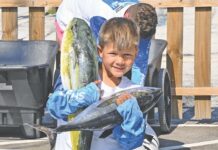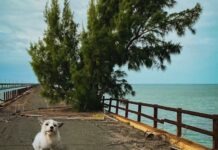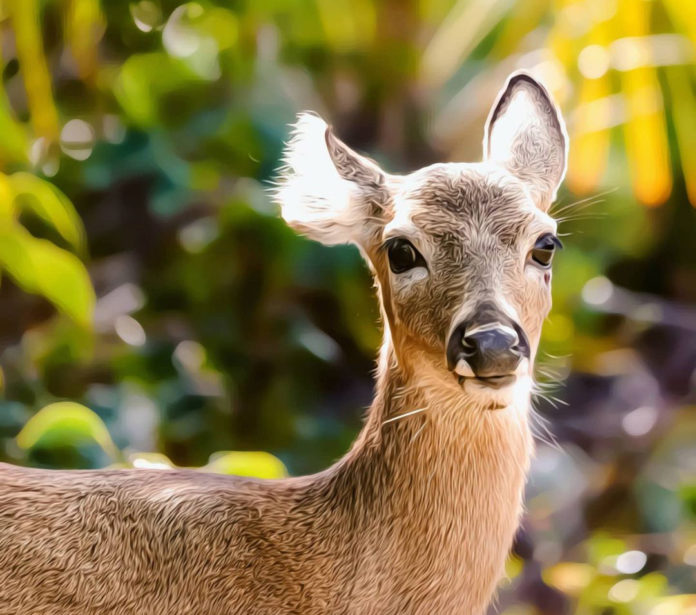The widely publicized shooting of an endangered Key deer on Big Pine Key remains under investigation by federal authorities. But for locals, the death of another protected animal has prompted a renewed outcry from those concerned with officers’ ability to respond in a timely fashion to such events.
“On Wednesday, November 16, the Service’s Office of Law Enforcement was informed that a Key deer was shot and killed on a residential lot on Big Pine Key,” said U.S. Fish and Wildlife Service (FWS) public affairs specialist Jennifer Koches in a statement on Nov. 18. “The Service is working with the State of Florida, and our agents are currently gathering facts as part of an ongoing investigation.”
The FWS oversees the National Key Deer Refuge in the Lower Keys, established in 1957 to protect the small endangered subspecies of white-tailed deer found exclusively in the island chain.
Though this is the second widely-publicized Key deer shooting in 2022, a press release submitted by the non-profit Save Our Key Deer, Inc. (SOKD) alleges that though still illegal, the shooting was intended as a mercy killing when it became apparent the distressed animal would not receive immediate medical attention.
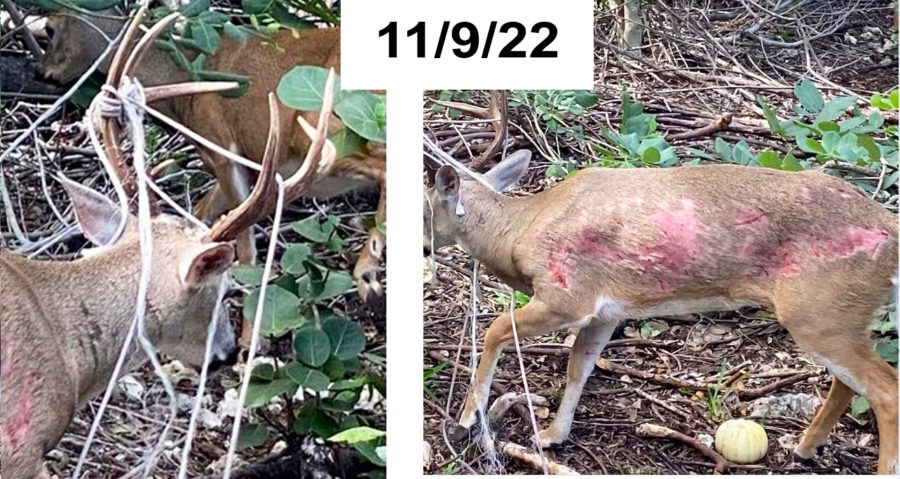
According to the release, the case began a week earlier when a Big Pine resident found the large buck stuck between two sections of fencing with rope entangled in his antlers on Nov. 9, causing him to sustain cuts and abrasions on both sides of his body.
The release states that residents contacted the wildlife hotline maintained by the Florida Fish and Wildlife Conservation Commission (FWC) as well as several FWS and FWC officials and volunteers, but the buck rushed off into the woods with his antlers still entangled when he was eventually freed from the fence.
Volunteers and officials attempted to locate the deer over the next week, but were unsuccessful until the buck was found lying in “extreme distress” near Independence Avenue on Nov. 16. Though not yet confirmed, the release states the buck “was likely suffering from organ failure due to ‘capture myopathy’ induced by severe stress.” The release further states that an individual “took it upon themselves to put the agonized buck out of his misery” after more than two and a half hours had elapsed since residents again called the FWC hotline.
“I’m hoping that (officials) can use this unfortunate case to help them get whatever they need to do to to get better staffing,” SOKD president Valerie Preziosi told Keys Weekly. “This was illegal and unsafe for anybody to do that, and we frown on that completely. However, there was a motive. … I wish (officials) were better educated to the level of understanding what that animal might be going through in a situation like that.”
With FWC’s hotline dispatch number routed to the mainland and unclear divisions of jurisdiction among multiple potential responding agencies, the release claims residents are increasingly less likely to wait for officials to respond to incidents.
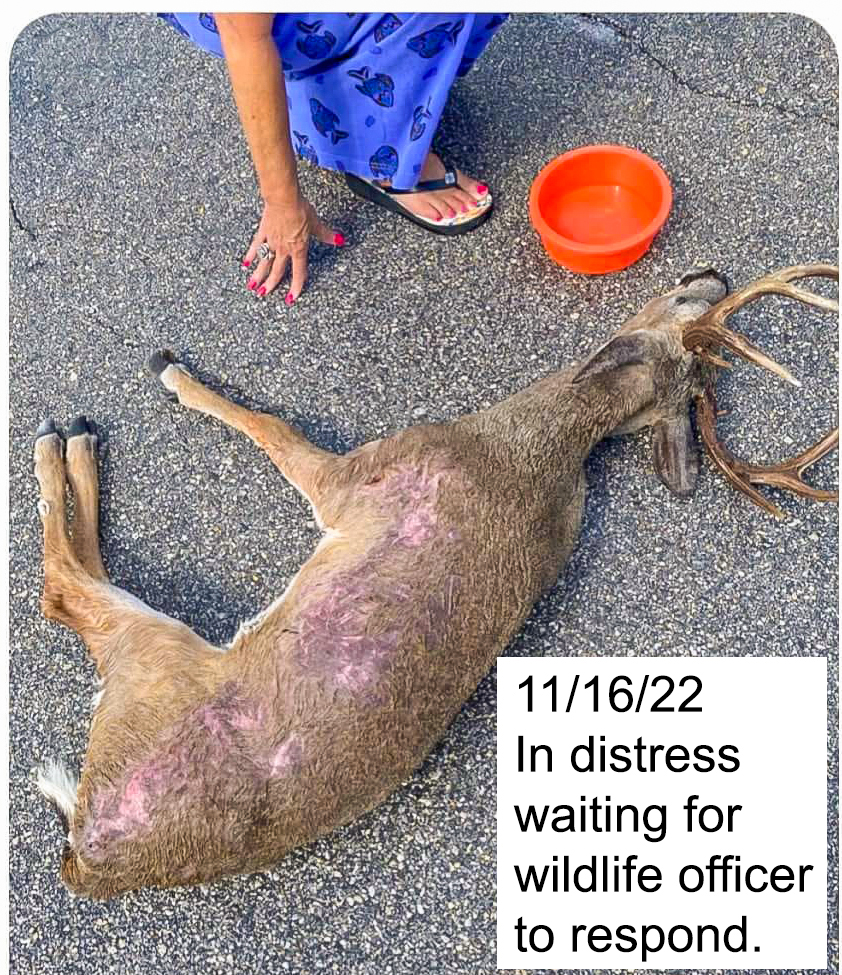
“The lack of response or lack of appropriate medical action following a call to ‘the Hotline’ has made many residents convinced that such a call is useless, and that the only option is to deal with the situation on their own, ultimately leading to last week’s shooting incident,” it concludes.
“Given the number of positions that we have, FWC is trying to cover the entire Florida Keys and the entire National Marine Sanctuary,” FWC Capt. David Dipre told the Weekly, similarly pointing to staffing concerns and a need for clear communication as the main drivers behind extended response times.
“It’s just not possible for us to always be where people want us to be,” he said.
Keys Weekly contacted FWS for an update on the investigation and further clarification of each agency’s responsibility when hotline calls are received for incidents such as these. Per its policy, the service declined to comment on an ongoing investigation, and clarification regarding the handling of calls was not yet available as of press time.
A Key deer shot in January on Sugarloaf Key was euthanized and transported to USFWS’ forensic laboratory in Ashland, Oregon for further analysis. It is unclear whether this deer will receive the same analysis.
With a remaining population of fewer than 1,000 individuals, Key deer are protected by both the federal Endangered Species Act and Florida law. Intentionally killing an animal carries a maximum penalty of one year in federal prison and a maximum fine of $100,000. Witnesses are urged to call 888-404-FWCC (3922), option 1 for Monroe County, to report a dead or seriously injured Key deer.




